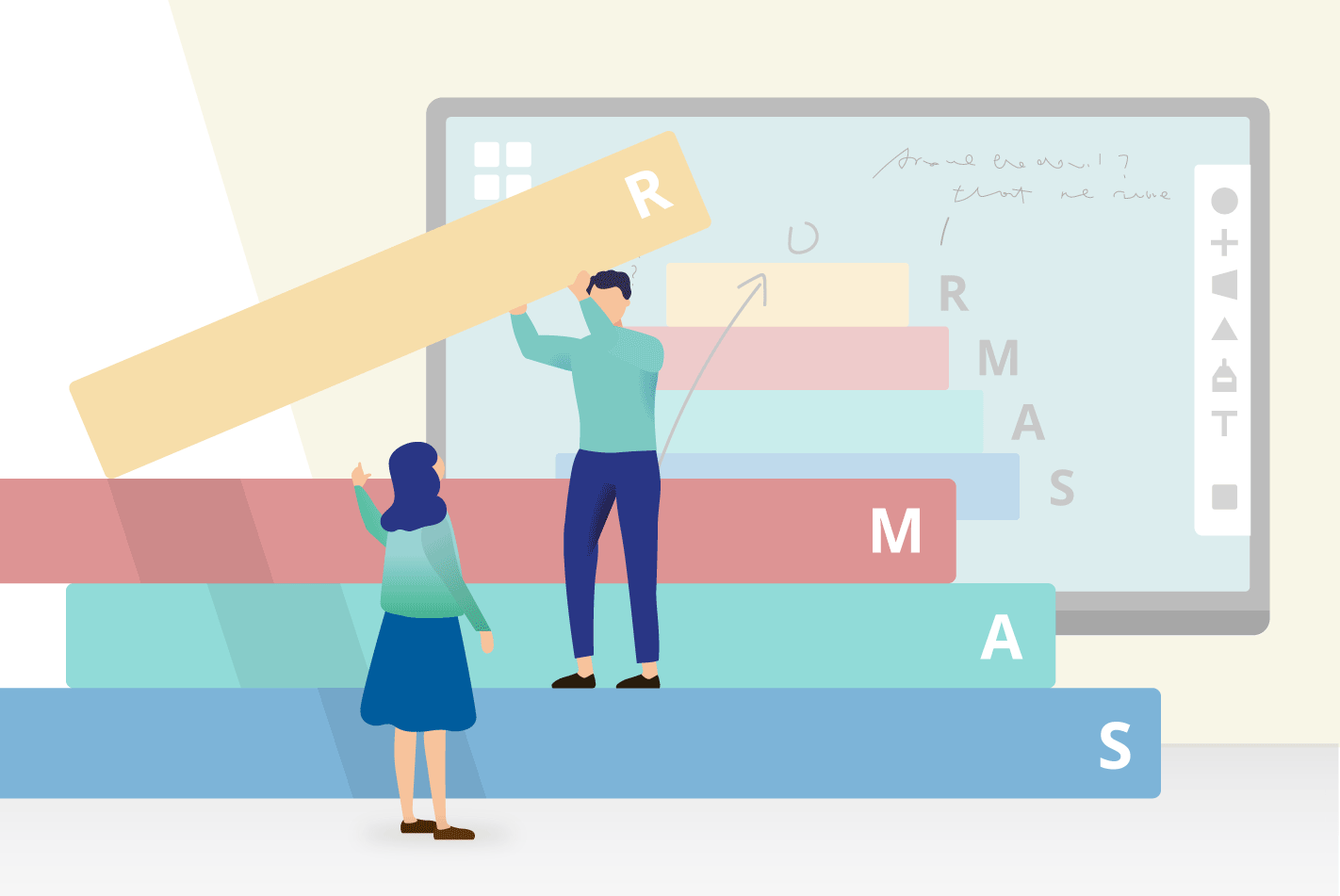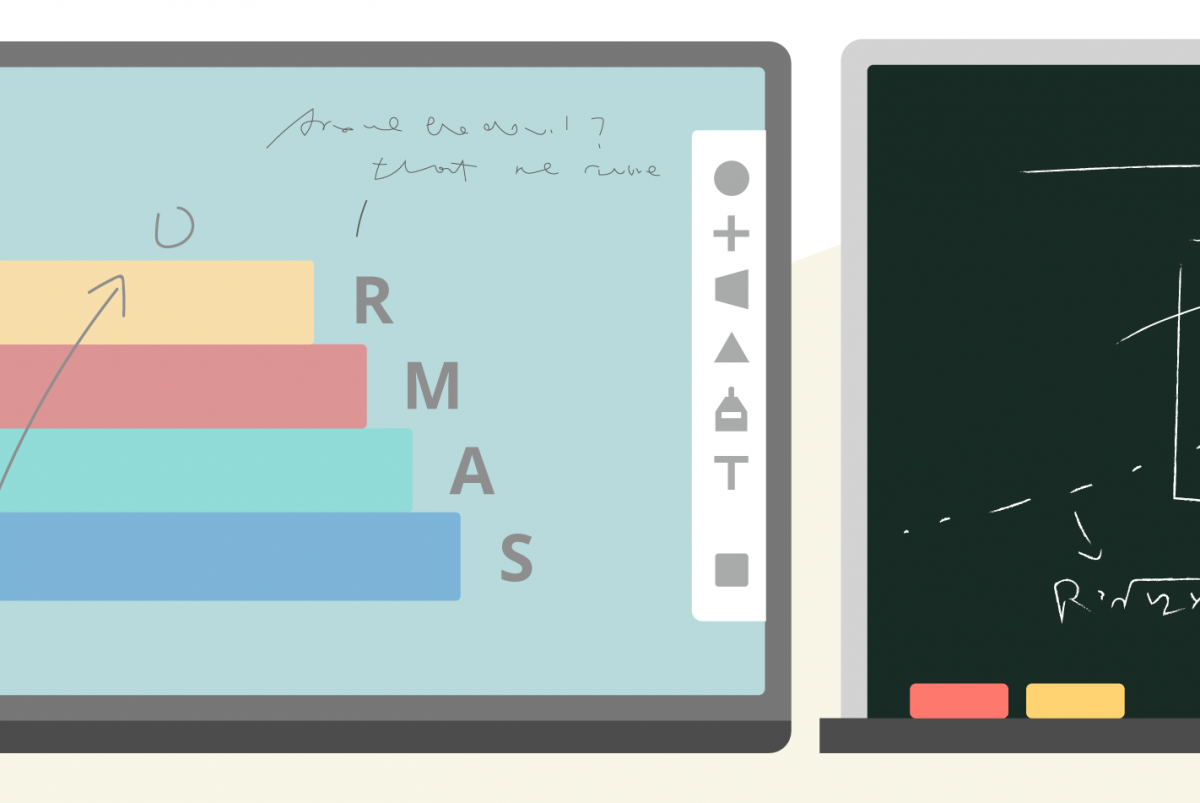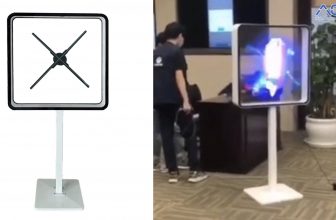
The SAMR model can effectively explain and guide how educational technology is integrated into the modern teaching scene. The SAMR acronyms each stand for “Substitution”, “Augmentation”, “Modification” and “Redefinition”. Each one illustrates the ways in which the learning process may be improved or changed due to technology. This model is particularly suitable for explaining and understanding the process of how smart interactive whiteboards are integrated into educational applications. Read on for more information about the SAMR model and how to apply this model to your own case.
Let us take a deeper look at the SAMR model and how this model is applied to an educational technology product, a smart interactive whiteboard.
What is the SAMR model
The founder of the SAMR model is Dr. Ruben Puentedura, which is used to classify the ways in which educational technology is integrated. He is also the general manager of Hippasus, an education consulting company, specializing in technology, education and management. SAMR stands for ” alternative (Substitution)”, ” improvement (Augmentation)”, ” transformation (Modification)” and ” redefined (Redefinition).” These four groups outline how to integrate different methods to implement and integrate technological tools in the teaching site. “Replacement” and “Improvement” are classified as “enhancement” class levels, and “retrofit” and “redefinition” are classified as “conversion” class levels.
In summary, these categories are described below.
Enhanced class level
Replacement: This technology can bring benefits directly as a tool replacement program, without any functional changes to the teaching task. For example, use a tablet to take class notes instead of paper and pen. The functionality of the two tools remains unchanged.
Improvement : This technology can bring benefits directly as a tool alternative, without any functional changes to the teaching task. For example, let students use computers to search academic articles to write reports instead of manual text searches in the library. The capabilities of this technology enhance the tools used in education, both in terms of speed and quantity of results.
Conversion class level
Transformation: This technology makes the task of education reinvented . From the perspective of implementing technology in education, this technology allows changes in the design of educational experiences and learning outcomes. For example, the use of Internet communication applications can realize remote teaching, which is a great leap forward compared with recorded video courses. This new technology provides many new features, such as instant interaction and feedback. Teachers can make good use of these features to redesign their courses.
Redefining: This technology allows you to create new tasks that were previously unimaginable. From the perspective of technology application, the educational experience is completely different. Technological tools allow teachers to redefine their learning goals, thereby creating new educational experiences. For example, using VR to provide students with an immersive experience, so that they can not only read the subject content in the textbook or watch the film, but also imagine the subject in virtual reality, allowing students to describe it in a richer level than before. Experience. The application of this VR technology can be said to be a reimagining of teaching tasks and attainable results.
Why is the SAMR model helpful in understanding educational technology?
The SAMR model is a practical scale that can be used to measure the impact and effect of technology on education.
In a way, the “enhanced” level only improves the current teaching standards and methods. The acceptance of this type of educational technology implementation is usually higher, and it is easier to integrate into the current curriculum and teaching style. This change process is gradual and does not require much retraining, because this type of technology is expected only to enhance the learning experience.
Another type of level is “transformation.” At this level, educational technology has a more significant impact on the transformation or even replacement of education. Teaching tasks need to be redesigned, reconfigured or redefined. The result may be very different from the original result.
For example, let us take a digital notebook on a tablet as an example. Through the transformation , teachers can integrate many new and different functions into their curriculum planning, such as embedded video and voice, click to display more teaching materials, and immediately connect to the Internet from the e-book link. Compared with traditional textbooks, these functions allow teachers to have more choices and flexibility to enhance their curriculum planning.
Considering the educational goals, the SAMR model can help determine whether technology has enhanced or transformed the learning process. This model is a tool to measure the effectiveness of technology and guide teachers to understand how to implement the technology tools provided. Some people just want to use technology to help them complete their teaching tasks, while others choose to use technology-based methods to replace traditional teaching methods.
Example of SAMR model using smart interactive whiteboard
One of the widely used and popular educational technology application examples in many schools and universities is the smart interactive electronic whiteboard. The different functions and features of this technology product can be applied to all levels in the SAMR model.
Each function of the smart interactive whiteboard corresponds to the SAMR model level:

- “Replacement” level digital whiteboard: In this case, the teacher only needs to use the smart interactive whiteboard to replace his daily work on the whiteboard/blackboard. The normal usage of writing, underlining and erasing of these two tools still exists, and the forms are roughly the same. Teachers can achieve this level, or use the slightly advanced built-in annotation tool in the digital whiteboard. This can elevate the application of this technology to a higher level of the SAMR model.

- “Improved” level real-time voting/quizzes: In this case, the teacher only needs to vote and answer questions on the students’ opinions. But with smart interactive whiteboards and new software applications, teachers can change to a digital method for students to vote and answer questions, rank or grade in real time. The voting function can provide more advanced additional options through educational technology, such as analysis and output reports. But the main function of voting remains largely unchanged.

- “Retrofit” level projection/screen sharing: More advanced smart interactive whiteboards allow users to perform wireless screen sharing and projection. This makes a significant change in the reach of teachers and students, allowing them to exchange ideas in new ways. Teachers need to rethink educational tasks to make good use of this feature. For example, during presentations, group collaborations, and brainstorming, students and teachers can project the screen onto the smart interactive whiteboard to instantly share the information they find on the Internet. Teachers can also share the whiteboard screen to students’ personal devices/vehicles. Such interactive sharing makes the educational task completely reborn.

- Multimedia presentation at the “redefinition” level: One of the main highlights of the conversion to a smart interactive whiteboard is the ability to present multimedia resources in the presentation. The static briefing can be transformed into a richer form. The smart interactive whiteboard allows users to add embedded video content, real-time streaming, real-time annotation, image manipulation and other items to the presentation. To use this technology, it is not only necessary to redesign the educational task, but also to think about the possibilities and choices that were impossible in the past.
You can apply each function of the smart interactive whiteboard in different ways and levels. Using the SAMR model, teachers can determine the depth of application of the technology tool in the classroom learning environment according to their needs.
Educational technology and SAMR model application
We can now understand that the SAMR model is not a guide to the introduction of educational technology, nor is it used to evaluate the effectiveness of a technology tool. The SAMR model only classifies the impact of implementing an educational technology. The classification of certain technological tools may cover many types; these are all up to the teacher, who can decide how to use these technological tools in their own classrooms. In addition, to illustrate and explain the SAMR model, we use the smart interactive whiteboard as an example. This example can cover all four levels under the SAMR model.





